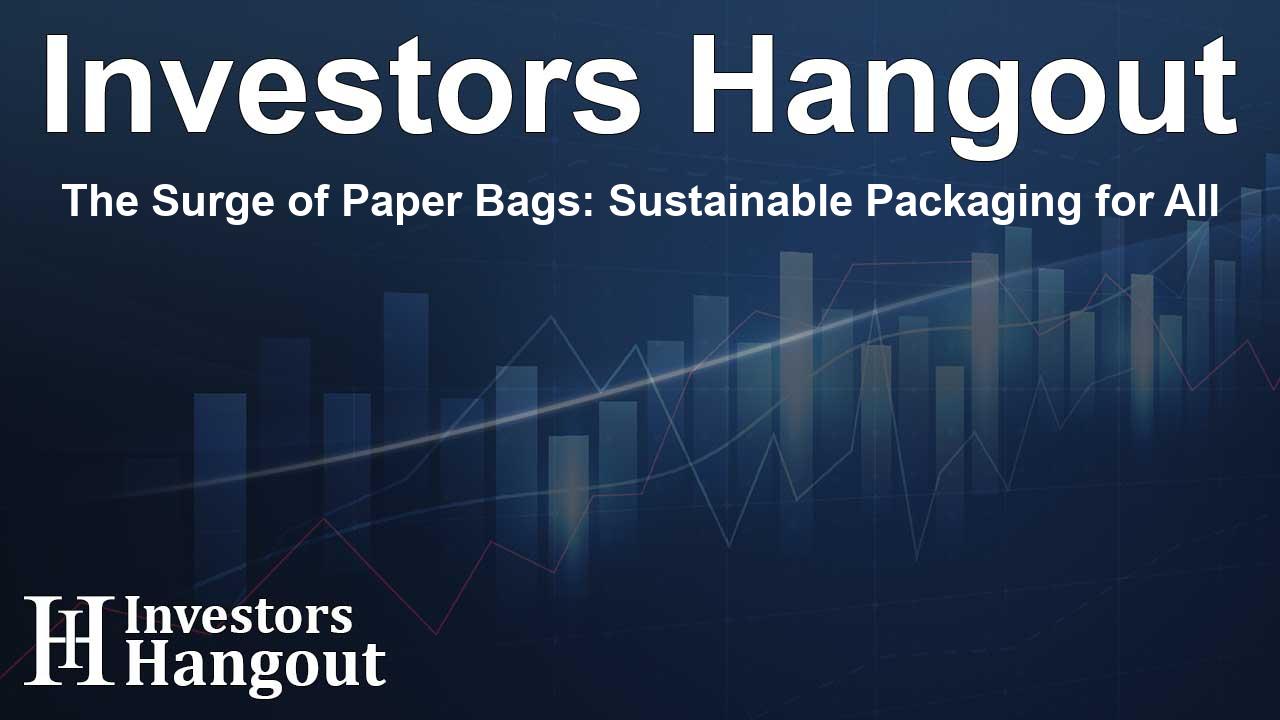The Surge of Paper Bags: Sustainable Packaging for All

The Surge of Paper Bags: Sustainable Packaging for All
The paper bags market is undergoing a remarkable transformation, driven by growing consumer preference for sustainable options. As we project into the future, the market is on a path to reach approximately USD 7.47 billion by 2029. This growth can be attributed to various factors such as the rising demand for packaged food and products and a growing consciousness about environmental impacts.
Understanding the Dynamics of the Market
Today's consumers are more aware of their ecological footprint, leading to a marked preference for sustainable packaging. The increase in urban population and a shift in lifestyle are also encouraging the use of paper bags over plastic alternatives. These bags are not just environmentally friendly; they offer practicality and convenience as well.
Market Forecast and Growth Rate
With the paper bags market currently valued at about USD 6.05 billion in 2024, it is positioned to grow at a CAGR of 4.3%. Factors such as the burgeoning e-commerce sector, where consumers are seeking responsible packaging solutions, play a significant role in this projected growth.
Demand by Product Type
Among the various types of paper bags available, flat-bottom paper bags emerged as the leading choice in the market. They provide enhanced stability and higher capacity, making them ideal for carrying weighty items. Retail and food sectors particularly appreciate these benefits, favoring designs that accommodate the increasing consumer demand for eco-friendly packaging.
Thickness Preferences in Paper Bags
From a thickness perspective, 2-ply paper bags are currently favored due to their blend of strength and cost-effectiveness. These bags are equipped to handle a variety of products, offering robust durability which appeals to both retailers and customers focused on sustainability.
Material Composition in the Market
When it comes to materials, brown kraft paper bags have shown to dominate the market due to their eco-friendly properties and functional strength. Derived from unbleached wood pulp, these bags are biodegradable and address the growing consumer concern about environmental impact. They are particularly effective for heavy products, making them a preferred choice within the retail and food packaging spheres.
End Use Sector Insights
The e-commerce segment of the paper bags market has gained significant traction as it accounted for the largest share in recent years. This shift is primarily due to the rapid growth of online shopping, with retailers seeking sustainable packaging solutions that comply with eco-conscious practices.
Regional Market Overview
The Asia-Pacific region is establishing its dominance within the paper bags market, driven by a surge in demand for sustainable packaging solutions. Countries like China and India play pivotal roles, with advances in production technologies enhancing the efficiency of creating eco-friendly packaging alternatives.
Key Players and Their Strategies
Several major players are continuously evolving within the paper bags market. Companies like Mondi Group, International Paper, and DS Smith are focusing on expansions and innovative product development to enhance their market positions. By adopting strategies such as joint ventures and acquisitions, these companies aim to cater to the increasing demand for sustainable packaging.
Wrapping Up: The Future of Paper Packaging
The growing emphasis on eco-friendly practices, coupled with the continued demand for packaged goods and advancements in manufacturing technologies, is setting a positive trajectory for the future of the paper bags market. Businesses must adapt and innovate to meet these trends, reinforcing their commitment to sustainability.
Frequently Asked Questions
What is driving the growth of the paper bags market?
The growth is influenced by rising consumer demand for sustainable packaging, increasing e-commerce activities, and urbanization trends.
What types of paper bags are most popular?
Flat-bottom paper bags are the most popular due to their stability and capacity, making them ideal for heavy and bulk items.
How is the thickness of paper bags impacting their market share?
2-ply paper bags are dominating due to their durability and cost-effectiveness, appealing to a broad spectrum of consumers and retailers.
Which regions are leading in paper bag consumption?
The Asia-Pacific region is currently leading in consumption, especially in China and India, due to the increasing demand for sustainable solutions.
What role do major players play in the market?
Major players leverage strategies such as innovation, acquisitions, and expansions to strengthen their market presence and meet the growing demand for eco-friendly packaging.
About Investors Hangout
Investors Hangout is a leading online stock forum for financial discussion and learning, offering a wide range of free tools and resources. It draws in traders of all levels, who exchange market knowledge, investigate trading tactics, and keep an eye on industry developments in real time. Featuring financial articles, stock message boards, quotes, charts, company profiles, and live news updates. Through cooperative learning and a wealth of informational resources, it helps users from novices creating their first portfolios to experts honing their techniques. Join Investors Hangout today: https://investorshangout.com/
Disclaimer: The content of this article is solely for general informational purposes only; it does not represent legal, financial, or investment advice. Investors Hangout does not offer financial advice; the author is not a licensed financial advisor. Consult a qualified advisor before making any financial or investment decisions based on this article. The author's interpretation of publicly available data shapes the opinions presented here; as a result, they should not be taken as advice to purchase, sell, or hold any securities mentioned or any other investments. The author does not guarantee the accuracy, completeness, or timeliness of any material, providing it "as is." Information and market conditions may change; past performance is not indicative of future outcomes. If any of the material offered here is inaccurate, please contact us for corrections.